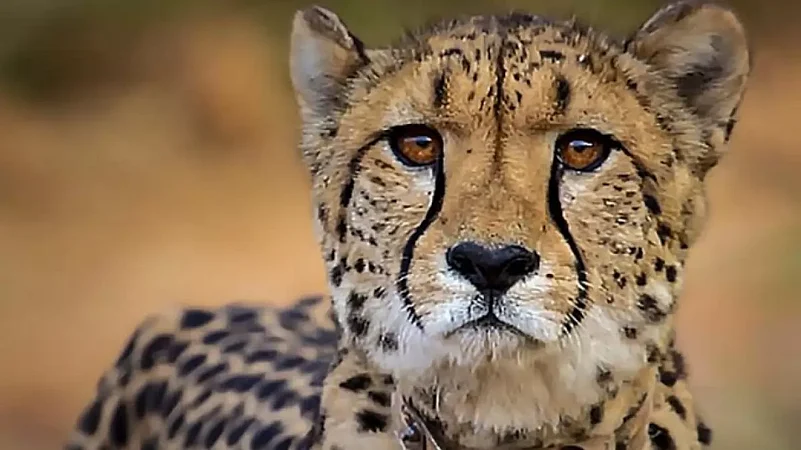A post-mortem report released on Friday regarding the death of the female cheetah– Dhatri at the Kuno National Park (KNP) revealed 'myiasis' or the infection resulting in maggot infestation to be the reason behind its death.
Dhatri was one of the cheetahs that were brought from Namibia and kept at KNP in Madhya Pradesh. She was found dead on Wednesday morning and the death toll reached nine.
According to a report by HT, an official said that this was the third cheetah death due to myiasis at the KNP.
Dhatri along with Nirva were the only two female cheetahs in the wild while the rest of the 14 were kept in an enclosure, including a cub.
The Cheetah Conservation Fund on Twitter shared the news of Dhatri's death, they wrote, “One of the female cheetahs from Namibia, Dhatri (Tbilisi), has passed away. CCF’s conservation release programme manager Barth Balli spent 10 days tracking her to get close enough for recapture. Though he could not capture her, he saw that she had successfully hunted."
The CCF further said, “In partnership with the veterinary team at Kuno National Park, CCF conducted a post-mortem examination, revealing that the cause of death was an infection resulting from maggot infestation, also known as myiasis."
Then they also informed that the collars put on the cheetahs monitoring them have been removed. CCF said that they are developing and testing a better collar material for the animals. They added, "While two female cheetahs remain in the wild, our efforts are concentrated on bringing them back for comprehensive health assessments and any necessary treatments."
The CCF then explained myiasis and how it can occur in cheetahs. they wrote, “The rapid incubation rate of fly eggs, along with the inconspicuous nature of the larvae, pose challenges for early detection. Within a span of mere days, these larvae mature rapidly, and the phenomenon of myiasis is not exclusive to cheetahs; it’s also observed in humans. It tends to be prevalent in rural regions with tropical climates, such as India, or during rainy seasons in arid climates, like Namibia.”
“Our utmost priority lies in ensuring the well-being of these magnificent creatures and their successful reintegration into their natural habitat. Drawing from previous release studies conducted between 2004 and 2018, we observed a high success rate ranging from 75% to 96% among selected individuals in achieving independence post-release,” said the CCF.
The CCF also mentioned that they are trying to protect the rest of the cheetahs and working to restore them to their native environment.
South African experts have reportedly recommended to the government, in a study that methods like cutting off the winter fur could help to deal with any form of infection.
The team, which includes Kuno wildlife veterinarians and the Namibian expert, constantly monitors the health of all 14 remaining cheetahs (seven males, six females, and one female cub) that are housed in bomas at KNP.


























